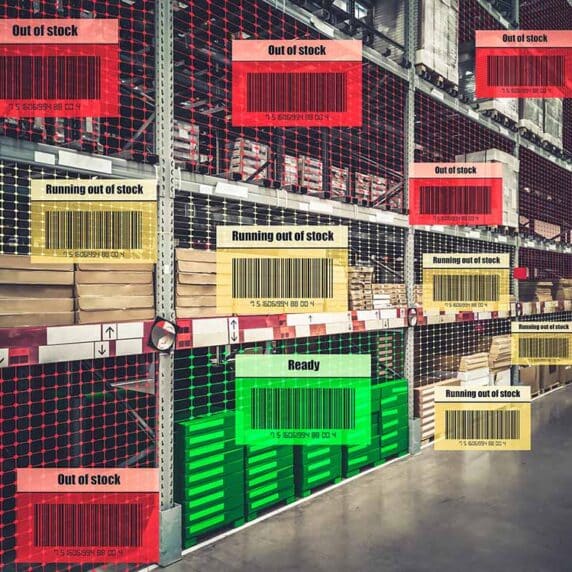Probabilistic Forecasting in Supply Chain Planning Explained
Introduction
Probabilistic forecasting in supply chain planning is transforming how companies predict demand and manage inventory. Unlike traditional forecasting methods that provide a single “best guess,” probabilistic forecasting offers a range of possible outcomes with associated probabilities. This approach allows businesses to prepare (*) for supply chain variability, reduce costs, and improve overall decision-making.
By considering multiple scenarios—such as seasonal spikes, sudden demand shifts, or supplier delays—supply chain leaders gain a more complete understanding of risks and opportunities. In this article, we explore what probabilistic forecasting is, why it matters, how it works, and how AI is enhancing its effectiveness in demand planning.
What is probabilistic forecasting in supply chain planning?
Probabilistic forecasting is a statistical and data-driven method to predict demand and supply chain performance. Instead of producing just one forecast number, it generates a range of possible outcomes with associated probabilities.
This method recognizes that real-world demand is uncertain and variable, allowing companies to plan for a range of scenarios. For instance, a forecast might indicate a 70% change of demand between 9,500 and 11,000 units next month, rather than just stating 10,000 units.
Why Does Probabilistic Forecasting Matter?
Probabilistic forecasting provides three key benefits that traditional deterministic methods cannot match:
- Manage uncertainty effectively
Traditional forecasting assumes a single “most likely” outcome, which often fails under real-world fluctuations. Probabilistic forecasting quantifies uncertainty in supply chain demand, giving businesses the ability to make informed trade-offs.
- Reduce costs while protecting service levels
By understanding the probability of different demand ranges, companies can avoid overstocking, which ties up capital, and understocking, which risks lost sales. This balance helps reduce inventory costs while ensuring customers get products on time.
- Support better decision-making
Supply chain leaders can test strategies against multiple risk scenarios, such as “What if demand is 20% higher than expected?” This enables smarter adjustments in safety stock, replenishment, production planning, and inventory optimization.

How Does Probabilistic Forecasting Work in Practice?
Probabilistic forecasting typically leverages:
- Historical demand data: Sales, seasonality, promotions.
- Statistical and machine learning models: Detect patterns of variability and uncertainty.
- Simulation techniques: Monte Carlo simulations generate thousands of potential outcomes.
- Probability distributions: Quantify the likelihood of each scenario.
The result is a robust, actionable forecast that prepares organizations for multiple outcomes, not just a single prediction. This method improves forecast accuracy and risk management.
Who Benefits from Probabilistic Forecasting in Supply Chain?
Probabilistic forecasting in supply chain planning provides tangible benefits for a wide range of stakeholders across the supply chain:
- Retailers: Anticipate fluctuating consumer demand during peak shopping seasons.
- Manufacturers: Plan production capacity with minimal risk of overstock or shortages.
- Distributors: Optimize inventory placement across multiple warehouses to meet regional demand.
- Executives: Present supply chain strategies with confidence to stakeholders.
How Is AI Advancing Probabilistic Forecasting?
AI is supercharging probabilistic forecasting by analyzing larger datasets and incorporating real-time variables such as:
- Weather patterns
- Economic trends
- Real-time sales data
AI models can continuously refine probability distributions, detect emerging risks, and recommend proactive supply chain adjustments. This shift allows companies to move from reactive firefighting to proactive supply chain risk management, enhancing resilience and efficiency.

A New Mindset for Supply Chain Planning
As supply chains become more interconnected and exposed to global volatility, the limitations of deterministic planning are increasingly apparent. The real world is rarely predictable; disruptions—whether from geopolitical events, climate anomalies, or sudden shifts in consumer demand—are now the norm rather than the exception. In this context, probabilistic forecasting is not just a technical upgrade, but a fundamental shift in mindset. It encourages organizations to embrace uncertainty, quantify risk, and make decisions that are robust under a wide range of possible futures.
A key evolution in this space is the move from centralized, rigid planning systems to more dynamic, distributed decision-making. Modern supply chain leaders are leveraging platforms that integrate real-time data, machine learning, and scenario modeling to sense and respond to market changes as they happen. This approach enables not only better risk management but also greater agility and resilience—qualities that are essential for thriving in today’s environment.
ToolsGroup’s long-standing commitment to probabilistic methods is notable for its focus on service-driven optimization. Rather than relying solely on traditional ABC inventory classification, ToolsGroup segments by service class and sets service level goals accordingly. This nuanced approach allows for more precise alignment between inventory investment and customer expectations, supporting both resilience and profitability. Furthermore, by embedding probabilistic science into the core of planning and execution, ToolsGroup empowers organizations to move beyond simply forecasting demand—they orchestrate it, turning insights into automated, adaptive actions across the supply chain.
Ultimately, the future of supply chain planning lies in the ability to anticipate, adapt, and deliver on promises—even when the path ahead is uncertain. Probabilistic forecasting is not just a tool, but a philosophy that positions organizations to lead with confidence in an unpredictable world.
FAQ: Common Questions About Probabilistic Forecasting in Supply Chain
Q: How is probabilistic forecasting different from deterministic forecasting?
A: Deterministic forecasting predicts a single outcome. Probabilistic forecasting provides a range of possible outcomes with associated confidence levels. This improves supply chain planning and decision-making under uncertainty.
Q: Do you need AI for probabilistic forecasts?
A: Not necessarily. Statistical models can handle basic probabilistic forecasting, but AI improves forecasting scalability, accuracy, and adaptability.
Q: Is probabilistic forecasting only for large companies?
A: No. Even mid-sized businesses can benefit by reducing inventory costs and improving customer satisfaction through probabilistic methods.
Why Choose ToolsGroup?
ToolsGroup helps companies move beyond outdated forecasting methods with AI-driven probabilistic forecasting embedded in supply chain planning solutions. Our platform gives decision-makers visibility, confidence, and control, enabling them to plan under uncertainty, maintain high service levels, and unlock working capital trapped in inventory. ToolsGroup ensures more accurate demand planning and supply chain resilience for businesses of all sizes.
(*) Access the full report today: Gartner® Innovation Insight: Leverage Uncertainty With Probabilistic Planning






